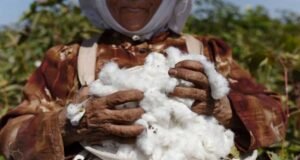The medical industry has been associated with long shifts; doctors and nurses are found on their feet for many hours. Comfortable nursing scrubs promote efficiency by offering a full range of motion, thus helping professionals stay alert and focused throughout their shifts. Fabric selection is of prime importance, keeping in view a combination of comfort and performance. Economically viable, durable materials such as cotton, rayon, polyester, and spandex may be opted for by nurses. A blend combined in proportions that would best suit the fits, flexibility being a major concern, is always an option. You will find added features in them, such as moisture-wicking properties that can keep you dry and comfortable, and for added protection against germs, some even boast antimicrobial treatments. A good scrub can make much difference in your work, comfortably fulfilling your job requirements while you prioritize comfort and mobility in those hectic hours of demand.
Contents
Cotton:
Cotton is one of the most popular fabrics in medical uniforms due to its natural, soft, and breathable nature. The material allows for air circulation and hence is comfortable during long shifts, especially for those working in high-stress settings. That could be due to the hypoallergenic properties of cotton, which also make this textile suitable for sensitive skin, hence decreasing the occurrence of irritation. However, there are some drawbacks: for example, the tendency of cotton to wrinkle easily and the ability of the material to absorb moisture can be a disadvantage in situations where spills may occur frequently. Quality cotton blends balance both comfort and strength.
Polyester:
Polyester is one of the synthetic fabrics known for outstanding durability. It doesn’t shrink in colour and shape, no matter how many times it is washed. It doesn’t shrink or wrinkle easily, and therefore, this particular fabric is very suitable for busy doctors and medical staff. Many polyester fabrics are designed to keep moisture away from the skin and, in turn, will keep the worker dry and comfortable throughout the shift. When selecting the right polyester scrubs, find those that have antimicrobial properties to offer improved hygiene, which helps in infection prevention.
Cotton-Polyester Blends:
You have a balance of comfort and durability with cotton-polyester blends. Fabrics made from these blends retain cotton’s softness and breathability while including polyester’s resilience. The plus side of this is that they are less prone to wrinkling and fading, another added advantage in a busy medical setting. Blends can also improve moisture-wicking capabilities to keep wearers dry and comfortable. If you do purchase scrubs made of blends, you need at least 65% polyester for them to perform optimally.
Moisture-Wicking Fabric:
Moisture-wicking fabrics have gained much favour in various medical uniforms, most especially for those professionals working for extended numbers of hours. These are fabrics manufactured to keep sweat off the skin and encourage effective evaporation. This keeps the wearer cool and dry, an aspect that is very important during stressful moments in the operating room. Most of these moisture-wicking fabrics are created from synthetic materials like polyester or nylon. You may, therefore, check on scrubs that are explicitly labelled as being with moisture-wicking ability.
Microfiber:
Microfiber is among the latest generations of fabrics that merge lightness with strength. The wonderful fibres create a soft texture but, at the same time, allow resistance against stains and spills. It is a good choice for medical uniforms, as microfiber is easy to clean and dries quickly, which is an important factor in healthcare because of hygiene concerns. This makes this fabric ideal for uniforms that see much activity and can hold up to daily wear and tear. Of these microfiber scrubs, added protection can be afforded by those with antimicrobial treatments.
Rayon Scrubs
Rayon is an artificial fibre manufactured from cellulose; hence, it is lightweight and absorbent enough to wear during the summer months. It is hypoallergic, too, which also makes rayon a good alternative to cotton. The best part is that rayon is generally cheaper than cotton and most other natural fibres. This cloth material still allows excellent ventilation and absorption of moisture; hence, it is commonly used by health workers for comfort, especially during summer.
Spandex Scrubs
For the scrubs that move along seamlessly with your busy schedule, spandex will turn out to be a great option. It’s known for its stretch and flexibility, and it is used regularly in yoga pants and other activewear pieces. Lightweight and breathable, spandex scrubs are the ultimate epitome of comfort and freedom of movement. If flexibility is the main attribute that you want, this fabric will be your best buddy. Also, spandex is not as likely to cause allergic reactions compared with natural fibres such as cotton; thus, it’s a good choice for sensitive skin.
Conclusion:
The best fabric for a medical uniform would be selected for comfort, durability, and ease of maintenance. Each of these fabrics has some merits, which range from cotton for breathability to resilient polyester blends. Knowledge of the properties in such fabrics helps the medical fraternity choose uniforms that will make them feel better and improve their performance, yet remain professional-looking even after the most arduous shifts. Investing in the good fabric can yield dividends like being able to face the onslaughts the medical world has in store and keeping the staff comfortable and confident in performing daily tasks.








